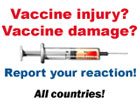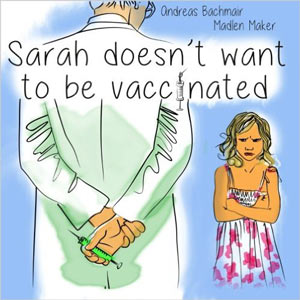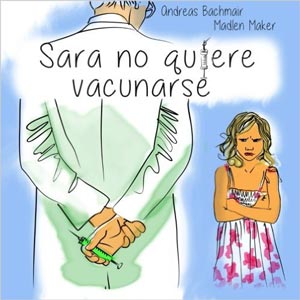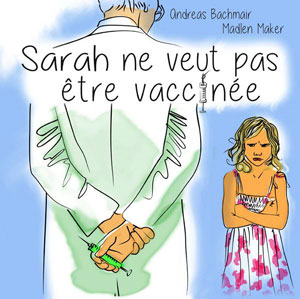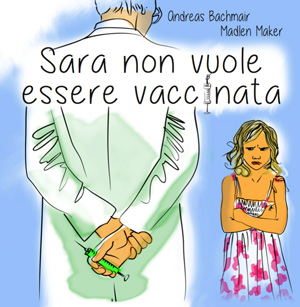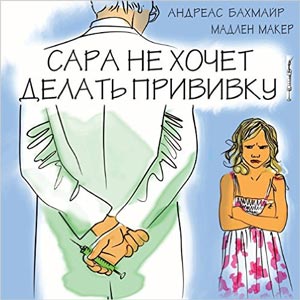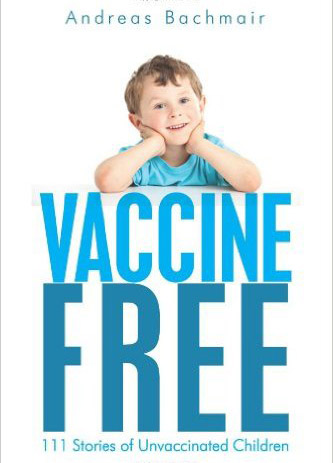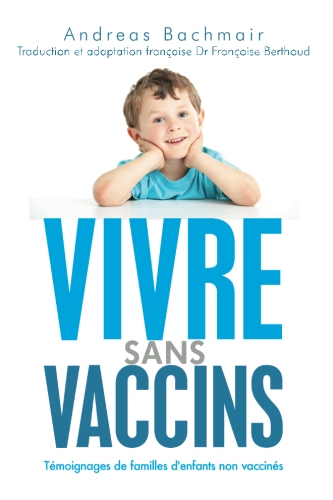Studies on polio vaccination:
Polio vaccination causes polio:
Chandra, R.K. “Reduced secretory antibody response to live attenuated measles and poliovirus vaccines in malnourished children.” British Medical Journal 1975; ii:583-85.
Polio paralysis:
Harry, N.M. “The recovery period in anterior poliomyelitis.” British Medical Journal 1938; 1:164-67.
Sharrard, W. “Muscle recovery in poliomyelitis.” J Bone Joint Surgery 1955; 37B:63-79.
Affeldt, J.E., et al. “Functional and vocational recovery in severe poliomyelitis.” Clin Orthop 1958; 12:16-21.
Hollenberg, C., et al. “The late effects of spinal poliomyelitis.” Can Med Assoc J 1959; 81:343-46.
Ramlow, J., et al. “Epidemiology of the post-polio syndrome.” American Journal of Epidemiology 1992; 136:783.
Sharrard, W. “Muscle recovery in poliomyelitis.” J Bone Joint Surgery 1955; 37B:63-79.
Affeldt, J.E., et al. “Functional and vocational recovery in severe poliomyelitis.” Clin Orthop 1958; 12:16-21.
Hollenberg, C., et al. “The late effects of spinal poliomyelitis.” Can Med Assoc J 1959; 81:343-46.
Ramlow, J., et al. “Epidemiology of the post-polio syndrome.” American Journal of Epidemiology 1992; 136:783.
Polio vaccine causes polio:
Strebel, Peter M., et al. “Epidemiology of poliomyletis in U.S. one decade after the last reported case of indigenous wild virus associated disease,” Clinical Infectious Diseases (CDC, February 1992), pp. 568-79.
Gorman, Christine. “When the vaccine causes the polio.” Time (October 30, 1995), p. 83. [Article]
Shaw, Donna. “Unintended casualties in war on polio.” Philadelphia Inquirer (June 6, 1993), p. A1. [Article]
Gorman, Christine. “When the vaccine causes the polio.” Time (October 30, 1995), p. 83. [Article]
Shaw, Donna. “Unintended casualties in war on polio.” Philadelphia Inquirer (June 6, 1993), p. A1. [Article]
Death rate of polio already went down before widespread polio vaccine introduction:
Alderson, Michael. International Mortality Statistics (Washington, DC: Facts on File, 1981), pp. 177-78.
The Standards for Defining Polio Were Altered When the Polio Vaccine Was Introduced. (By making simple changes to the diagnostic criteria, the number of Polio cases was predetermined to decrease.)
Hearings Before the Committee on Interstate and Foreign Commerce, House of Representatives, 87th Congress, 2nd Session on HR 10541. May 1962, pp. 94-112.The
Poilo vaccination and cancer:
Shah, K and Nathanson, N. “Human exposure to SV40.” American Journal of Epidemiology, 1976; 103: 1-12.
Innis, M.D. “Oncogenesis and poliomyelitis vaccine.” Nature, 1968; 219:972-73.
Soriano, F., et al. “Simian virus 40 in a human cancer.” Nature, 1974; 249:421-24.
Weiss, A.F., et a;. “Simian virus 40-related antigens in three human meningiomas with defined chromosome loss.” Proceedings of the National Academy of Science 1975; 72(2):609-13.
Scherneck, S., et al. “Isolation of a SV-40-like papovavirus from a human glioblastoma.” International Journal of Cancer 1979; 24:523-31.
Stoian, M., et al. “Possible relation between viruses and oromaxillofacial tumors. II. Research on the presence of SV40 antigen and specific antibodies in patients with oromaxillofacial tumors.” Virologie, 1987; 38:35-40.
Stoian, M., et al. “Possible relation between viruses and oromaxillofacial tumors. II. Detection of SV40 antigen and of anti-SV40 antibodies in patients with parotid gland tumors.” Virologie, 1987; 38:41-46.
Bravo, M.P., et al. “Association between the occurrence of antibodies to simian vacuolating virus 40 and bladder cancer in male smokers.” Neoplasma, 1988; 35:285-88.
O’Connell, K., et al. Endothelial cells transformed by SV40 T-antigen cause Kaposi’s sarcoma-like tumors in nude mice.” American Journal of Pathology, 1991; 139(4):743-49.
Weiner, L.P., et al. “Isolation of virus related to SV40 from patients with progressive multifocal leukoencephalopathy.” New England Journal of Medicine, 1972; 286:385-90.
Tabuchi, K. “Screening of human brain tumors for SV-40-related T-antigen.” International Journal of Cancer 1978; 21:12-17.
Meinke, W., et al. “Simian virus 40-related DNA sequences in a human brain tumor.” Neurology 1979; 29:1590-94.
Krieg, P., et al. “Episomal Simian Virus 40 Genomes in Human Brain Tumors.” Proceedings of the National Academy of Sciences of the USA, 1981, 78(10):6446-6450.
Krieg, P., et al. “Cloning of SV40 genomes from human brain tumors.” Virology 1984; 138:336-40.
Geissler, E. “SV40 in human intracranial tumors: passenger virus or oncogenic ‘hit-and-run’ agent?” Z Klin Med, 1986; 41:493-95.
Geissler, E. “SV40 and Human Brain Tumors.” Progress in Medical Virology, 1990; 37:211-222.
Bergsagel, D.J., et al. “DNA sequences similar to those of simian virus 40 in ependymomas and choroid plexus tumors of childhood.” New England Journal of Medicine, 1992; 326:988-93.
Martini, M., et al. “Human Brain Tumors and Simian Virus 40.” Journal of the National Cancer Institute, 1995, 87(17):1331.
Lednicky, JA., et al. “Natural Simian Virus 40 Strains are Present in Human Choroid Plexus and Ependymoma Tumors.” Virology, 1995, 212(2):710-17.
Tognon, M., et al. “Large T Antigen Coding Sequence of Two DNA Tumor Viruses, BK and SV-40, and Nonrandom Chromosome Changes in Two Gioblastoma Cell Lines.” Cancer Genetics and Cytogenics, 1996, 90(1): 17-23.
Carbone, M., et al. “SV-40 Like Sequences in Human Bone Tumors.” Oncogene, 1996, 13(3):527-35.
Pass, HI, Carbone, M., et al. “Evidence For and Implications of SV-40 Like Sequences in Human Mesotheliomas.” Important Advances in Oncology, 1996, pp. 89-108.
Rock, Andrea. “The Lethal Dangers of the Billion Dollar Vaccine Business,” Money, (December 1996), p. 161. [Article]
Carlsen, William. “Rogue virus in the vaccine: Early polio vaccine harbored virus now feared to cause cancer in humans.” San Francisco Chronicle (July 15, 2001), p. 7. [Article: Research by Susan Fisher, epidemiologist, Loyola University Medical Center.]
Bookchin, D. and Schumacher J. “Tainted polio vaccine still carries its threat 40 years later.” The Boston Globe (January 26, 1997). [Article]
Rosa, FW., et al. “Absence of antibody response to simian virus 40 after inoculation with killed-poliovirus vaccine of mothers offspring with neurological tumors.” New England Journal of Medicine, 1988; 318:1469.
Rosa, FW., et al. Response to: “Neurological tumors in offspring after inoculation of mothers with killed poliovirus vaccine.” New England Journal of Medicine, 1988, 319:1226.
Martini, F., et al. “SV-40 Early Region and Large T Antigen in Human Brain Tumors, Peripheral Blood Cells, and Sperm Fluids from Healthy Individuals.” Cancer Research, 1996, 56(20):4820-4825.
Innis, M.D. “Oncogenesis and poliomyelitis vaccine.” Nature, 1968; 219:972-73.
Soriano, F., et al. “Simian virus 40 in a human cancer.” Nature, 1974; 249:421-24.
Weiss, A.F., et a;. “Simian virus 40-related antigens in three human meningiomas with defined chromosome loss.” Proceedings of the National Academy of Science 1975; 72(2):609-13.
Scherneck, S., et al. “Isolation of a SV-40-like papovavirus from a human glioblastoma.” International Journal of Cancer 1979; 24:523-31.
Stoian, M., et al. “Possible relation between viruses and oromaxillofacial tumors. II. Research on the presence of SV40 antigen and specific antibodies in patients with oromaxillofacial tumors.” Virologie, 1987; 38:35-40.
Stoian, M., et al. “Possible relation between viruses and oromaxillofacial tumors. II. Detection of SV40 antigen and of anti-SV40 antibodies in patients with parotid gland tumors.” Virologie, 1987; 38:41-46.
Bravo, M.P., et al. “Association between the occurrence of antibodies to simian vacuolating virus 40 and bladder cancer in male smokers.” Neoplasma, 1988; 35:285-88.
O’Connell, K., et al. Endothelial cells transformed by SV40 T-antigen cause Kaposi’s sarcoma-like tumors in nude mice.” American Journal of Pathology, 1991; 139(4):743-49.
Weiner, L.P., et al. “Isolation of virus related to SV40 from patients with progressive multifocal leukoencephalopathy.” New England Journal of Medicine, 1972; 286:385-90.
Tabuchi, K. “Screening of human brain tumors for SV-40-related T-antigen.” International Journal of Cancer 1978; 21:12-17.
Meinke, W., et al. “Simian virus 40-related DNA sequences in a human brain tumor.” Neurology 1979; 29:1590-94.
Krieg, P., et al. “Episomal Simian Virus 40 Genomes in Human Brain Tumors.” Proceedings of the National Academy of Sciences of the USA, 1981, 78(10):6446-6450.
Krieg, P., et al. “Cloning of SV40 genomes from human brain tumors.” Virology 1984; 138:336-40.
Geissler, E. “SV40 in human intracranial tumors: passenger virus or oncogenic ‘hit-and-run’ agent?” Z Klin Med, 1986; 41:493-95.
Geissler, E. “SV40 and Human Brain Tumors.” Progress in Medical Virology, 1990; 37:211-222.
Bergsagel, D.J., et al. “DNA sequences similar to those of simian virus 40 in ependymomas and choroid plexus tumors of childhood.” New England Journal of Medicine, 1992; 326:988-93.
Martini, M., et al. “Human Brain Tumors and Simian Virus 40.” Journal of the National Cancer Institute, 1995, 87(17):1331.
Lednicky, JA., et al. “Natural Simian Virus 40 Strains are Present in Human Choroid Plexus and Ependymoma Tumors.” Virology, 1995, 212(2):710-17.
Tognon, M., et al. “Large T Antigen Coding Sequence of Two DNA Tumor Viruses, BK and SV-40, and Nonrandom Chromosome Changes in Two Gioblastoma Cell Lines.” Cancer Genetics and Cytogenics, 1996, 90(1): 17-23.
Carbone, M., et al. “SV-40 Like Sequences in Human Bone Tumors.” Oncogene, 1996, 13(3):527-35.
Pass, HI, Carbone, M., et al. “Evidence For and Implications of SV-40 Like Sequences in Human Mesotheliomas.” Important Advances in Oncology, 1996, pp. 89-108.
Rock, Andrea. “The Lethal Dangers of the Billion Dollar Vaccine Business,” Money, (December 1996), p. 161. [Article]
Carlsen, William. “Rogue virus in the vaccine: Early polio vaccine harbored virus now feared to cause cancer in humans.” San Francisco Chronicle (July 15, 2001), p. 7. [Article: Research by Susan Fisher, epidemiologist, Loyola University Medical Center.]
Bookchin, D. and Schumacher J. “Tainted polio vaccine still carries its threat 40 years later.” The Boston Globe (January 26, 1997). [Article]
Rosa, FW., et al. “Absence of antibody response to simian virus 40 after inoculation with killed-poliovirus vaccine of mothers offspring with neurological tumors.” New England Journal of Medicine, 1988; 318:1469.
Rosa, FW., et al. Response to: “Neurological tumors in offspring after inoculation of mothers with killed poliovirus vaccine.” New England Journal of Medicine, 1988, 319:1226.
Martini, F., et al. “SV-40 Early Region and Large T Antigen in Human Brain Tumors, Peripheral Blood Cells, and Sperm Fluids from Healthy Individuals.” Cancer Research, 1996, 56(20):4820-4825.
Polio Impfung und Aids
Essex, M., et al. “The origin of the AIDS virus.” Scientific American, 1988; 259:64-71.
Karpas, A. “Origin and Spread of AIDS.” Nature, 1990; 348:578.
Kyle, Walter S. “Simian retroviruses, poliovaccine, and origin of AIDS.” Lancet, 1992; 339:600-601.
Elswood, B.F. and Stricker, R.B. “Polio vaccines and the origin of AIDS.” Medical Hypothesis, vol. 42, 1994, pp. 347-354.
Myers, G., et al. “The emergence of simian/human immunodeficiency viruses.” AIDS Res Human Retro 1992: 8:373-86.
Workshop on Simian Virus-40 (SV-40): A Possible Human Polyomavirus. (National Vaccine Information Center, January 27-28, 1997.) www.909shot.com/polio197.htm (Includes a summary of evidence presented at the Eighth Annual Houston Conference on AIDS.)
Martin, Brian. “Polio vaccines and the origin of AIDS: The career of a threatening idea.” Townsend Letter for Doctors (January 1994), pp. 97-100.
Curtis, Tom. “Did a polio vaccine experiment unleash AIDS in Africa?” The Washington Post (April 5, 1992), pp. C3+.
World Health Organization. “T-lymphotropic retroviruses of nonhuman primates.” WHO informal meeting. Weekly Epidemiology Records, 1985; 30:269-70.
Huet, T., et al. “Genetic organization of a chimpanzee lentivirus related to HIV-1.” Nature 1990; 345:356-359.
Desrosiers, R.C. “HIV-1 origins: A finger on the missing link.” Nature 1990; 345:288-89.
Sabin, A.B. “Properties and behavior of orally administered attenuated poliovirus vaccine.” Journal of the American Medical Association 1957; 164: 1216-23.
Plotkin, S.A., Koprowski, H., et al. “Clinical trials in infants of orally administered poliomyelitis viruses.” Pediatrics 1959; 23:1041-62.
Barin, F., et al. “Serological evidence for virus related to simian T-lymphotropic retrovirus III in residents of West Africa.” Lancet 1985; ii:1387-1389.
Hirsch, V.M., et al. “Simian immunodeficiency virus infection of macaques: End-stage disease is characterized by widespread distribution of proviral DNA in tissues.” Journal of Infectious Disease 1991; 163:976-988.
Bohannon, R.C., et al. “Isolation of a Type D retrovirus from B-cell lymphomas of a patient with AIDS.” Journal of Virology 1991; 65(11):5663-72.
Khabbaz, R.F., et al. “Simian immunodeficiency virus needlestick accident in a laboratory worker.” Lancet 1992; 340:271-73.
Gao, F., et al. “Human infection by genetically diverse SIVsm-related HIV-2 in West Africa.” Nature 1992; 358:495-99.
Giunta S., et al. “The primate trade and the origin of AIDS viruses.” Nature 1987; 329:22.
Seale, J. “Crossing the species barrier—viruses and the origins of AIDS in perspective.” J R Soc Med 1989; 82:519-23.
Lecatsas G. “Origin of AIDS.” Nature 1991; 351:179.
Koprowski, H. “Historical aspects of the development of live virus vaccine in poliomyelitis.” British Medical Journal 1960; ii:85-91.
Lebrun, A., et al. “Vaccination with the CHAT strain of Type 1 attenuated poliomyelitis virus in Leopoldville, Belgian Congo.” Bulletin of the World Health Organization 1960; 22:203-213.
Sabin, A.B. “Present position of immunization against poliomyelitis with live virus vaccines.” British Medical Journal 1959; i:663-680.
Mahmias, A.J., et al. “Evidence for human infection with an HTLV III/LAV-like virus in Central Africa, 1959.” Lancet 1986; i:1279-80.
Huminer, D., et al. “AIDS in the pre-AIDS era.” Rev Infect Dis 1987; 9:1102-08.
Corbitt, G., et al. “HIV infection in Manchester, 1959.” Lancet 1990; ii:51.
Cohen, J. “Debate on AIDS origin: Rolling Stone weighs in — Controversial article angers vaccine experts by claiming AIDS could have been spread by polio vaccines in Africa.” Science (March 1992), p. 1505. [Article]
Sonnet, J., et al. “Early AIDS cases originating from Zaire and Burtundi (1962-1976).” Scandinavian Journal of Infectious Disease 1987; 19:511-17.
Karpas, A. “Origin and Spread of AIDS.” Nature, 1990; 348:578.
Kyle, Walter S. “Simian retroviruses, poliovaccine, and origin of AIDS.” Lancet, 1992; 339:600-601.
Elswood, B.F. and Stricker, R.B. “Polio vaccines and the origin of AIDS.” Medical Hypothesis, vol. 42, 1994, pp. 347-354.
Myers, G., et al. “The emergence of simian/human immunodeficiency viruses.” AIDS Res Human Retro 1992: 8:373-86.
Workshop on Simian Virus-40 (SV-40): A Possible Human Polyomavirus. (National Vaccine Information Center, January 27-28, 1997.) www.909shot.com/polio197.htm (Includes a summary of evidence presented at the Eighth Annual Houston Conference on AIDS.)
Martin, Brian. “Polio vaccines and the origin of AIDS: The career of a threatening idea.” Townsend Letter for Doctors (January 1994), pp. 97-100.
Curtis, Tom. “Did a polio vaccine experiment unleash AIDS in Africa?” The Washington Post (April 5, 1992), pp. C3+.
World Health Organization. “T-lymphotropic retroviruses of nonhuman primates.” WHO informal meeting. Weekly Epidemiology Records, 1985; 30:269-70.
Huet, T., et al. “Genetic organization of a chimpanzee lentivirus related to HIV-1.” Nature 1990; 345:356-359.
Desrosiers, R.C. “HIV-1 origins: A finger on the missing link.” Nature 1990; 345:288-89.
Sabin, A.B. “Properties and behavior of orally administered attenuated poliovirus vaccine.” Journal of the American Medical Association 1957; 164: 1216-23.
Plotkin, S.A., Koprowski, H., et al. “Clinical trials in infants of orally administered poliomyelitis viruses.” Pediatrics 1959; 23:1041-62.
Barin, F., et al. “Serological evidence for virus related to simian T-lymphotropic retrovirus III in residents of West Africa.” Lancet 1985; ii:1387-1389.
Hirsch, V.M., et al. “Simian immunodeficiency virus infection of macaques: End-stage disease is characterized by widespread distribution of proviral DNA in tissues.” Journal of Infectious Disease 1991; 163:976-988.
Bohannon, R.C., et al. “Isolation of a Type D retrovirus from B-cell lymphomas of a patient with AIDS.” Journal of Virology 1991; 65(11):5663-72.
Khabbaz, R.F., et al. “Simian immunodeficiency virus needlestick accident in a laboratory worker.” Lancet 1992; 340:271-73.
Gao, F., et al. “Human infection by genetically diverse SIVsm-related HIV-2 in West Africa.” Nature 1992; 358:495-99.
Giunta S., et al. “The primate trade and the origin of AIDS viruses.” Nature 1987; 329:22.
Seale, J. “Crossing the species barrier—viruses and the origins of AIDS in perspective.” J R Soc Med 1989; 82:519-23.
Lecatsas G. “Origin of AIDS.” Nature 1991; 351:179.
Koprowski, H. “Historical aspects of the development of live virus vaccine in poliomyelitis.” British Medical Journal 1960; ii:85-91.
Lebrun, A., et al. “Vaccination with the CHAT strain of Type 1 attenuated poliomyelitis virus in Leopoldville, Belgian Congo.” Bulletin of the World Health Organization 1960; 22:203-213.
Sabin, A.B. “Present position of immunization against poliomyelitis with live virus vaccines.” British Medical Journal 1959; i:663-680.
Mahmias, A.J., et al. “Evidence for human infection with an HTLV III/LAV-like virus in Central Africa, 1959.” Lancet 1986; i:1279-80.
Huminer, D., et al. “AIDS in the pre-AIDS era.” Rev Infect Dis 1987; 9:1102-08.
Corbitt, G., et al. “HIV infection in Manchester, 1959.” Lancet 1990; ii:51.
Cohen, J. “Debate on AIDS origin: Rolling Stone weighs in — Controversial article angers vaccine experts by claiming AIDS could have been spread by polio vaccines in Africa.” Science (March 1992), p. 1505. [Article]
Sonnet, J., et al. “Early AIDS cases originating from Zaire and Burtundi (1962-1976).” Scandinavian Journal of Infectious Disease 1987; 19:511-17.
Mutationen des Polio Impfvirus
Crainic, R., et al. “Polio virus with natural recombinant genomes isolated from vaccine associated paralytic poliomyelitis.” Virology 1993; 196:199-208.
Yoshida, H., et al. Lancet (October 28, 2000).
Reuters Health. “Polio outbreak in Dominican Republic and Haiti Caused by vaccine-derived virus.” Reuters Medical News (December 4, 2000). www.id.medscape.com/reuters/prof/2000/12/12.05/20001204epid001.html
Yoshida, H., et al. Lancet (October 28, 2000).
Reuters Health. “Polio outbreak in Dominican Republic and Haiti Caused by vaccine-derived virus.” Reuters Medical News (December 4, 2000). www.id.medscape.com/reuters/prof/2000/12/12.05/20001204epid001.html


